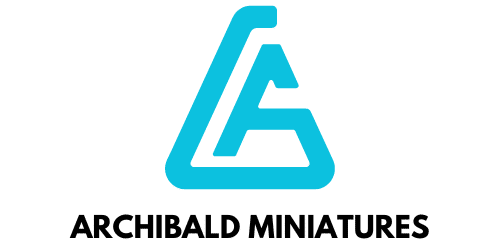What’s the Role of Active Isolated Stretching in Enhancing Flexibility for Dancers?

Everyone knows that dancing is more than just moving rhythmically to music. It’s a highly physical activity that requires strength, coordination, and above all, flexibility. For dancers, being flexible isn’t just about being able to do splits or bend in seemingly impossible ways, but also about maintaining the range of motion in the joints and preventing muscle injuries. One effective method to improve flexibility is through Active Isolated Stretching (AIS). But what is AIS and how does it contribute to a dancer’s flexibility? Let’s explore.
Understanding Active Isolated Stretching (AIS)
Before diving into the benefits and methods of AIS, it’s important to understand what it is. Unlike static stretches, where you hold a stretch for a long period, AIS involves holding each stretch for only two seconds. This approach is based on the principle that prolonged stretching can trigger a protective reflex in the muscles, causing them to contract instead of lengthening. By limiting the stretch to only two seconds, AIS bypasses this reflex, allowing the muscles to stretch without contracting.
A découvrir également : What’s the Impact of Personalized Blood Flow Restriction Training on Hypertrophy for Bodybuilders?
AIS is often used in sports performance and physical therapy. It’s designed to isolate specific muscles and increase their flexibility and strength. For dancers, who need an extensive range of motion and muscle control, AIS can be a crucial part of their training routine.
How AIS Enhances Flexibility
So how exactly does AIS work to enhance flexibility? The key lies in its unique approach to stretching. Instead of holding a stretch for a long period, which can cause the muscles to contract and resist the stretch, AIS uses a series of dynamic, active stretches. The stretches are brief and repeated several times, which helps to gradually increase the muscle’s length and flexibility.
A découvrir également : How Can Genetic Profiling Guide Injury Prevention Strategies in Elite Athletes?
AIS targets not just the major muscle groups, but also the smaller, often neglected muscles. By isolating and stretching these muscles, AIS can help improve overall flexibility, reduce muscle imbalances, and enhance body awareness – all of which are essential for dancers. With consistent AIS training, dancers can achieve greater flexibility, which translates to improve performance and reduced risk of injury.
The Role of AIS in Dance Training
Now that we’ve explored what AIS is and how it works, let’s delve into its role in dance training. While all forms of stretching have their place in a dancer’s training routine, AIS offers several distinct advantages.
Firstly, AIS’s focus on isolated, dynamic stretches allows dancers to target specific muscles. This can be especially useful for dancers who need to improve flexibility in certain areas or who have muscle imbalances. Furthermore, because AIS stretches are dynamic, they mimic the movements that dancers make, helping to improve performance in a realistic way. Secondly, by focusing on active movements, AIS helps to strengthen the muscles as they stretch. This not only improves flexibility but also contributes to the overall strength and endurance of the dancer.
Applying AIS to Dancer’s Routine
Implementing AIS into a dancer’s routine doesn’t have to be complicated. The exercises can be done with a partner or alone, using a rope or a strap. The key is to focus on one muscle at a time, hold the stretch for only two seconds, and repeat 8-10 times.
Start with the lower body, focusing on the hip flexors, hamstrings, and calves, then move to the upper body. Remember to breathe normally during the stretches and not to force the stretch. It should feel gentle and controlled, not painful.
In conclusion, AIS is a valuable tool for dancers looking to improve their flexibility. By focusing on active, isolated stretches, it offers a safe and effective way to enhance range of motion, reduce muscle imbalances, and boost performance. As with any exercise routine, it’s important to listen to your body and progress at your own pace. With persistence and consistency, you’ll find that AIS can bring your dancing to a whole new level.
One last tip: always ensure that your AIS routine is guided by a trained professional to avoid injuries and maximize benefits. Happy stretching!
Comparison of AIS to Other Stretching Techniques
There are several stretching techniques that dancers use, including static stretching, ballistic stretching and proprioceptive neuromuscular facilitation (PNF) stretching. It’s crucial to compare these methods to understand why Active Isolated Stretching (AIS) stands out.
Static stretching is holding a stretch for a long period, around 30 seconds or more. It can increase flexibility, but overstretching may lead to muscle injuries. Ballistic stretching involves bouncing movements to push your body beyond its normal range of motion. Though it may improve flexibility, it carries a high risk of injury as the bounce can force the muscle into an extended position abruptly.
PNF stretching is a more advanced form of flexibility training that involves both the stretching and contracting of the muscle group being targeted. This method can be highly effective but generally requires a partner and is complex to perform correctly.
In contrast, AIS is a technique that involves isolated stretching for short durations, bypassing the body’s natural protective reflex that often limits range of motion. Unlike static stretching, it doesn’t cause the muscles to contract due to overstress, and it’s safer than ballistic stretching as it avoids abrupt, forceful movements. Compared to PNF stretching, AIS is simpler to perform and doesn’t always require a partner.
Overall, AIS provides a balanced approach to stretching, balancing safety, effectiveness, and ease of use. It targets both major and minor muscle groups and promotes both flexibility and strength, making it an ideal choice for dancers.
Acute Effects and Long-term Benefits of AIS for Dancers
In the immediate term, AIS can help dancer’s warm-up effectively before a performance or training session. The dynamic nature of AIS exercises increases blood flow to the muscles, preparing them for the strenuous movements to come and reducing the risk of acute injury.
In the long run, consistent application of AIS can lead to increased flexibility and mobility, which are key elements of a dancer’s skill set. By targeting specific muscles, AIS helps dancers to improve their range of motion, and reduces muscle imbalances that can hinder performance or lead to injuries.
Moreover, AIS also contributes to neuromuscular facilitation, enhancing communication between the nervous system and muscles. This allows for more efficient muscle contractions and improvements in strength and agility.
Finally, the incorporation of AIS can also lead to improvements in body awareness. As dancers become accustomed to isolating and stretching individual muscles, they gain a better understanding of their bodies, which can help them to refine their technique and express themselves more effectively through movement.
Conclusion
In conclusion, Active Isolated Stretching (AIS) is a powerful tool for dancers, offering a practical and effective method to enhance flexibility, reduce the risk of injury, and improve overall performance. Its focus on isolated, dynamic stretches allows for specific, targeted improvements, and its simplicity means it can be easily incorporated into a dancer’s routine.
Remember, while AIS can be performed alone, it’s always beneficial to have guidance from a trained professional initially, to ensure the exercises are being done correctly and to avoid potential injuries. The key with AIS, as with all stretching exercises, is consistent practice. With patience and dedication, AIS can help dancers achieve their maximum potential, bringing a whole new dimension to their performances.
So to all dancers out there, give AIS a try and feel the difference it can make to your flexibility, strength, and performance. Stay flexible and keep dancing!
